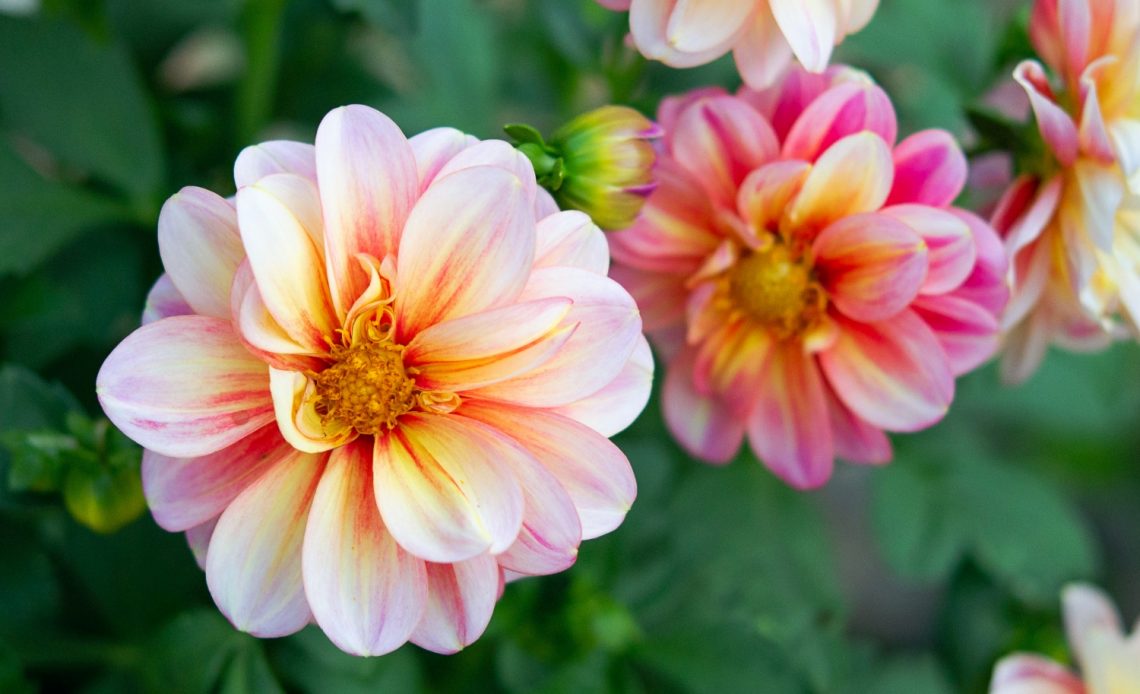

We’re here to help! Wild Yards is a completely free website that is 100% dedicated to helping you create a wildlife-friendly, sustainable yard. Read more
WildYards is reader-supported. When you buy a product through a link on our site, we may earn a comission. Every product is independently selected by our (obsessive) editors and our reviews are unbiased and objective. Read more about our mission or our privacy policy.
At first glance, dahlias and zinnias could easily be mistaken for one another. These two flowers have a lot in common, so it’s no wonder people get confused. But while these plants do share many of the same characteristics, there are also some key differences that you need to keep in mind before choosing which one to plant in your flower beds. So, when it comes to dahlia vs. zinnia, what’s the difference?
Dahlias can grow much taller than zinnias, reaching heights of 72 inches, whereas zinnias only grow 48 inches tall at the most. Dahlias also have a wider variety of flower shapes and sizes, which can make it easier to distinguish between these two plants.
Dahlias and zinnias at a glance
Before we dig a little deeper into what makes dahlias and zinnias different, let’s take a quick look at some of the basics:
| Zinnia | Dahlia | |
| Family | Asteraceae | Asteraceae |
| Tribe | Heliantheae | Coreopsideae |
| Lifespan | Annuals/Perennials | Annuals/Perennials |
| Height | 6” to 48” | 15” to 72” |
| Propagation | Seed | Seed/Tuber |
| Growing Zones | 2 through 11 | 3 through 10 |
| Colors | Orange, red, yellow, purple, pink, green, white, bicolor | Orange, red, yellow, purple, pink, white, variegated, bicolor |
| Bloom Type | Single, semi-double, double, dahlia, cactus | Single, anemone, ball, cactus, decorative, waterlily, stellar, collarette, orchette, pompom, orchid, laciniated, mignon, peony |
| Flower Size | 1” to 6” in diameter | 2” to 12” in diameter |
| Experience Level | Beginner | Beginner |
| Best Use | Landscaping, companion planting, cutting | Landscaping, cutting |
As you can see, although dahlias and zinnias belong to the same family as daisies and sunflowers, they can be divided into two separate tribes. Additionally, while dahlias and zinnias may resemble each other greatly, a second look proves that they’re actually quite different. Zinnias are much smaller and more compact than dahlias, so are most often utilized as garden borders and companion plants. But dahlias are generally much taller and are ideal for landscaping and cutting.
In spite of their differences, both zinnias and dahlias are very easy to grow, even for beginners. These plants can both be started from seeds, although dahlias can also be started from tubers. Both of these plants are most often grown as annuals. But, with a little coaxing, both zinnias and dahlias can be grown as perennials in warmer regions.
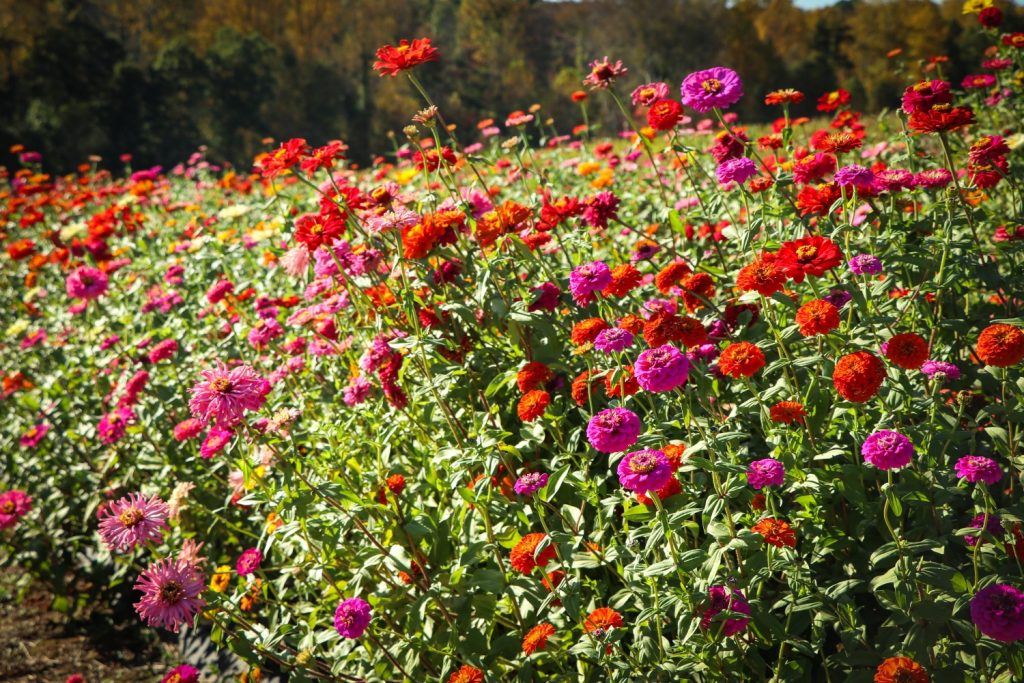
What are dahlias?
Native to Mexico, Central America, and parts of South America, dahlias are herbaceous flowering shrubs that are most often grown as perennials. Dahlia flower heads are composite flowers, featuring a central disc surrounded by ray florets. These florets, which are mistakenly identified as flower petals, are actually separate, individual flowers.
There are 42 accepted species of dahlias, with plants ranging in size from the small pompom, which measures just 2 inches in diameter, to giant dinnerplate dahlias, which can measure 12 inches across. Dahlias are a popular choice for use as accent plants when landscaping pollinator gardens since their wide array of colors attracts butterflies.
Dahlias come in a variety of shapes (see table above), but some are easier to distinguish from zinnias than others. Ball and pompom varieties feature the quintessential tubular florets that come to mind when we think of dahlias. But other dahlia flowers, like peony, orchette, mignon, and collarette have open faces and flatter petals that greatly resemble zinnias.
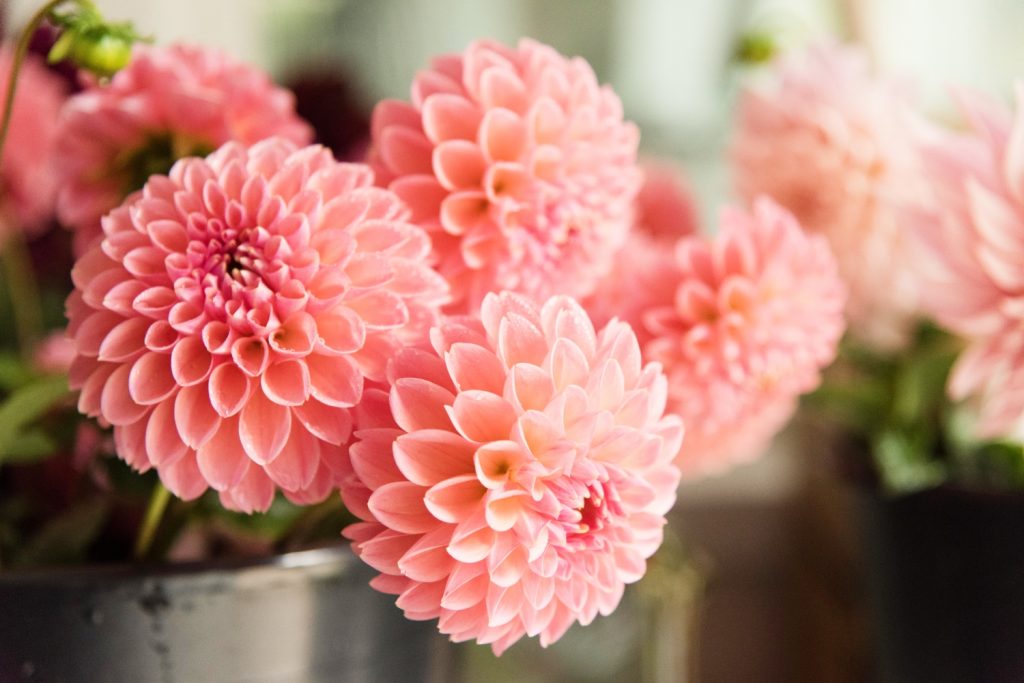
What are dahlia’s growing requirements?
Another way to distinguish dahlias from zinnias is by examining the plant’s growing requirements. Dahlias grow best when planted in full to partial sunlight, in soil that stays moist but drains well. These shrubs like to be planted in slightly acidic soil, with a pH of 6.3 to 6.8. Dahlias are often grown alongside pine trees, as their needles acidify the soil over time, making it a perfect home for the flowers.
To get the most out of these blooms, it’s best to plant dahlias tubers in rich, loamy soil that has an abundance of decaying organic materials. If your soil is clay-rich and compacted by years of foot traffic, amend it with a healthy dose of homemade compost before planting.
It’s best to plant dahlia bulbs in mid-spring, just as the weather is starting to warm up and the threat of a freeze has passed. As your dahlias mature, they will need to be staked to prevent the flower heads from weighing the stalks down and causing the stems to break. Dahlias are especially popular with beneficial garden insects, including bees and hoverflies. However, they may also attract deer, particularly if other food sources are scarce, so take measures to keep these animals away, if necessary.
What are zinnias?
Found primarily in North America with a few additional species native to parts of South America, zinnias are mounding shrubs that are popular in a variety of landscapes thanks to their vibrant colors and easy-going nature. Zinnias are some of the most popular spring and summer annuals, along with marigolds, which are another butterfly favorite.
When it comes to versatility, zinnias are the clear winner. Like dahlias, they can be used to accent your landscaping, and are especially popular for use as a garden border. But, because these plants repel damaging insects and attract beneficial ones, that makes them well-suited to companion planting. Zinnias make excellent companion plants for a number of garden favorites, including melons, basil, cucumbers, and tomatoes.
Compared to dahlias, zinnias have a much less formal appearance. There are around 20 species of zinnias, with only 5 main flower shapes, compared to dahlia’s 14. Zinnia flowers are also much smaller than dahlias on average, with flowers typically measuring only a few inches across.
Because zinnias are also composite flowers made up of florets surrounding a central disc, they’re often confused with other members of the Asteraceae family. Dahlia zinnias, in particular, are commonly misidentified as proper dahlias thanks to their layered, ruffled appearance.
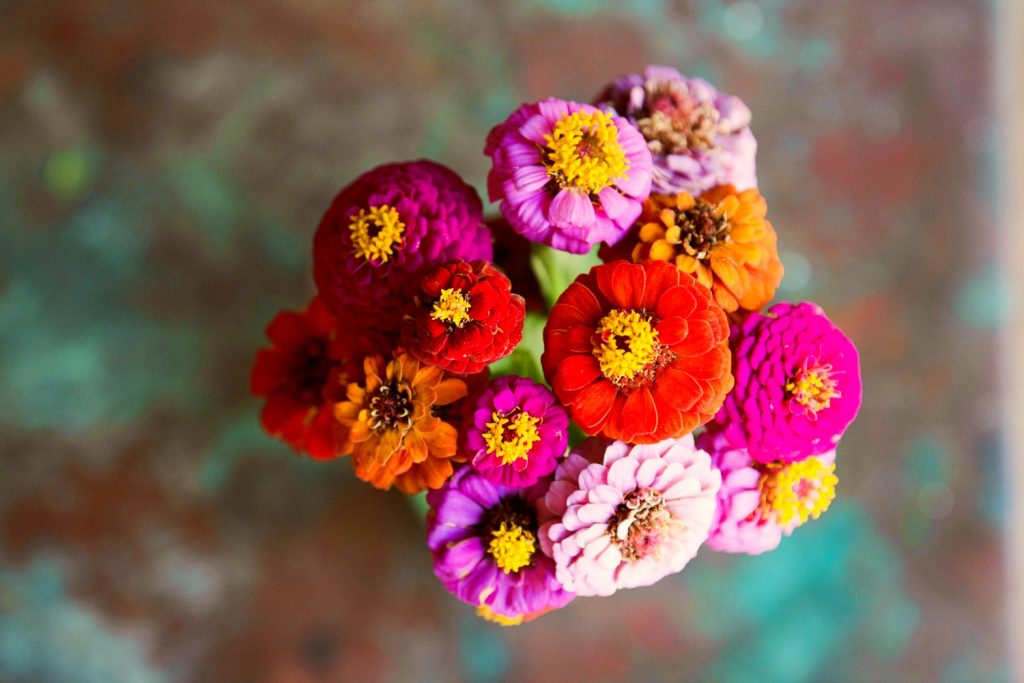
What are zinnia’s growing requirements?
Compared to dahlias, zinnias are just a tad more low-maintenance. Because zinnias stay on the shorter side, they usually don’t need to be staked up, making things easier on you from a gardening perspective. In fact, as long as your zinnia’s growing requirements are met, they can pretty much take care of themselves.
These flowers grow best when planted in full sun. Soil should be loose and loamy and full of organic materials so that it drains well, but still retains some moisture. Zinnias are more tolerant of different soil types than dahlias and grow well in acidic to neutral soils (pH of 5.5 to 7.5). As with most other flowering plants, zinnias perform best if they’re deadheaded regularly.
Because mature zinnias are easily stressed out by the transplanting process, it’s best to start the plants from seeds and move them to your garden while they’re still young. Sow your zinnia seeds indoors 4 to 6 weeks before the last frost of spring, and move them outside after they’ve developed 2 to 4 sets of true leaves. Zinnias typically bloom for 60 days, but you can prolong the flowering period by staggering your seedlings’ starting dates.
Dahlia vs. Zinnia — How are these two plants alike?
Dahlias and zinnias have a lot in common. They share much of the same growing requirements, they come in many of the same colors, and their flower shapes are so similar that sometimes it can be very difficult to determine which flower is which. And because dahlias and zinnias bloom during the same period, from late spring to fall, that can make it even more difficult to tell them apart.
Unfortunately, because they’re related, dahlias and zinnias also share many of the same pests and diseases. Aphids, mites, leafhoppers, caterpillars, and beetles are as happy to munch on dahlias as they are on zinnias. Both flowers can also fall prey to blights, powdery mildew, root rot, crown gall, and wilt. No matter which plant you choose, it’s important to inspect them regularly so you can address any infestations and illnesses before they get out of hand.
These two flowers are also alike when it comes to their ability to attract local wildlife. Dahlias and zinnias come in an array of vibrant colors that are easy for passing pollinators to spot. Their florets offer insects multiple opportunities to feed. Adding zinnias and dahlias to your garden (ideally along with a few native pollinator plants) is an excellent way to bring more bees and butterflies to your backyard.
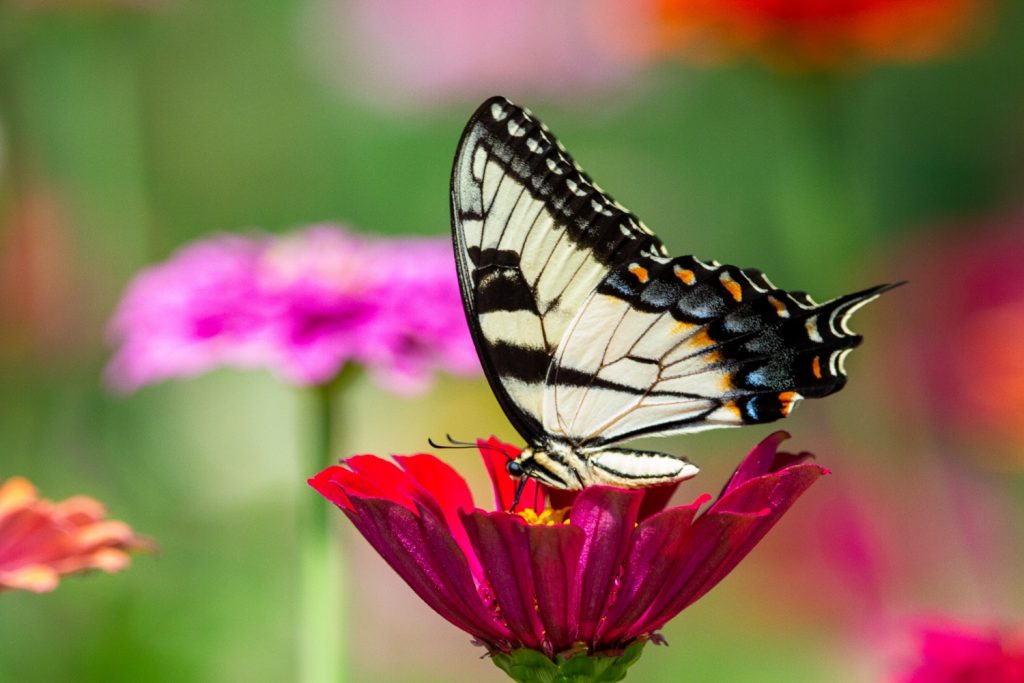
Dahlia vs. Zinnia — What are the main differences?
Dahlias and zinnias have a few key differences, not just visually, but also in terms of their health and functionality within a given landscape. While both of these plants are considered to be deer-resistant, zinnias are slightly more deer-resistant thanks to their fuzzy, prickly stems. Deer dislike the way these flowers feel on their delicate tongues, so they’re less likely to snack on them.
Zinnias are also a much better option when it comes to companion planting. Their unimposing, compact nature means they can easily be grown around herbs and in between rows of your vegetable patch. Zinnias can be used as a trap crop to lure harmful insects off of your valuable produce, while also working to attract beneficial pollinators. Though dahlias may also be able to increase pollination rates within your garden, because they’re so tall, they’re better off simply being planted near your garden, rather than in it.
Now, let’s talk aesthetics: If you take a closer look at a zinnia, you’ll notice that it has a very distinct medallion, similar to a daisy. You can easily tell where the center of the flower is and where the petals begin. But the dahlia’s center medallion is covered in even more florets so that the center florets blend almost seamlessly into the peripheral florets. It’s also worth noting that zinnias bloom at the ends of single stalks, whereas dahlias can produce multip stems and flowers at the ends of their stalks.
Another small difference between zinnias and dahlias: Zinnias may have prickly stems, but dahlias can cause contact dermatitis in some individuals. If you find you’re particularly sensitive to certain plants, like poison ivy, be sure to wear long sleeves and gloves when handling dahlias, or consider planting zinnias instead.
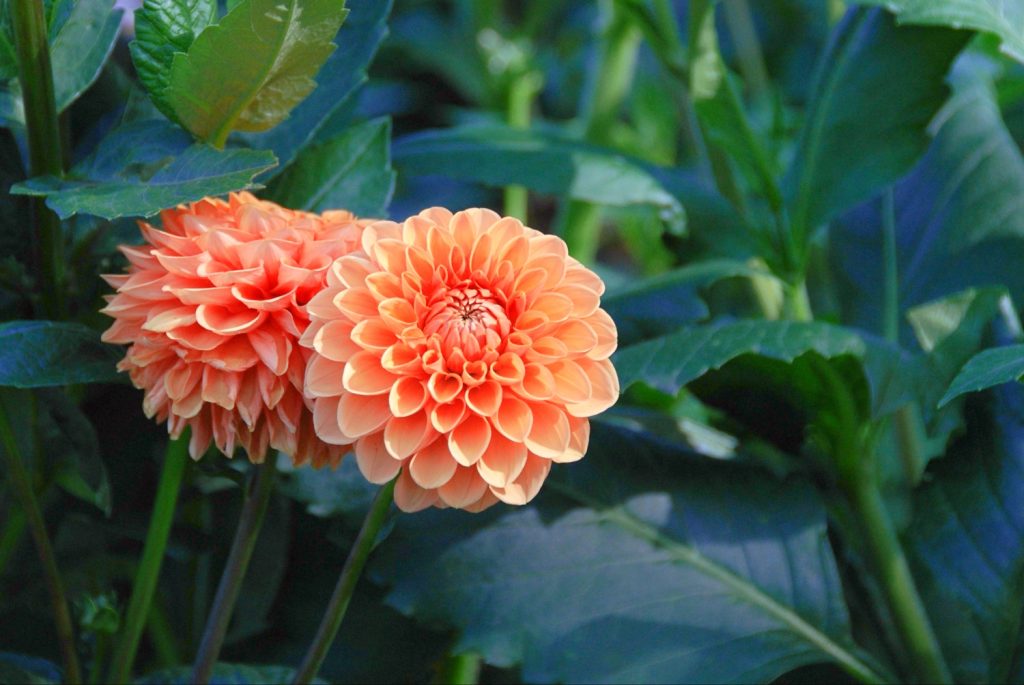
Dahlia vs. Zinnia — Which one should you choose for your garden?
Now that you know what makes dahlias and zinnias so similar (and what makes them so different!), it’s time to decide which flower will be the best choice for your garden. Here are a few things to keep in mind before planting.
Zinnias can tolerate a range of soil types
Dahlias can be pretty finicky when it comes to soil pH. While they may be able to grow in soils that are slightly more acidic or slightly more alkaline than their preferred range, they probably won’t reach their full potential in such soils.
Zinnias, on the other hand, can tolerate a wider range of soil types. As long as your zinnias are planted in nutrient-rich soil that has plenty of organic matter, the plants can easily put up with slightly acidic to more alkaline soil.
While zinnias are more forgiving when it comes to soil type, they still grow best when planted in porous, loamy soil. Amend clay-rich soils with perlite, sand, manure, and/or compost to boost mineral content and aid in aeration. Keeping the soil nice and loose is key to growing healthy zinnias.
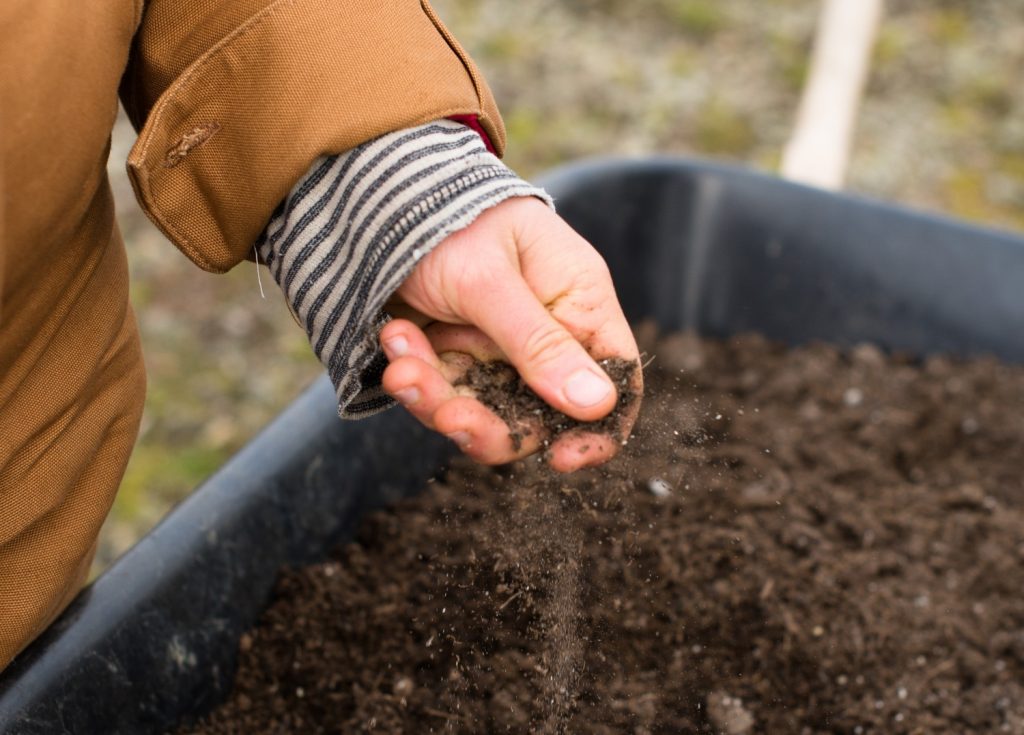
Dahlias are perfect for creating a dramatic landscape
Pretty as they are, zinnias are on the smaller side. And although they can create an eye-catching border for your flower beds, they lack that certain avante-garde quality that dahlias, with their imposing height and spectacular flower heads, naturally possess.
If you want a dramatic, modern landscape, dahlias should be your go-to flower. Ball and decorative dahlia varieties, in particular, will fit right in. Featuring crisp, elegant lines and fascinating geometric shapes, dahlias are the perfect choice for adding color to your contemporary garden.
Dahlias look beautiful when grown near dwarf mugo pine trees, which share the dahlia’s growing requirements and have the added benefit of acidifying the soil over time to make it more to your dahlia’s liking. These flowers can also be used with ornamental grasses to landscape rock flower beds around taller trees.
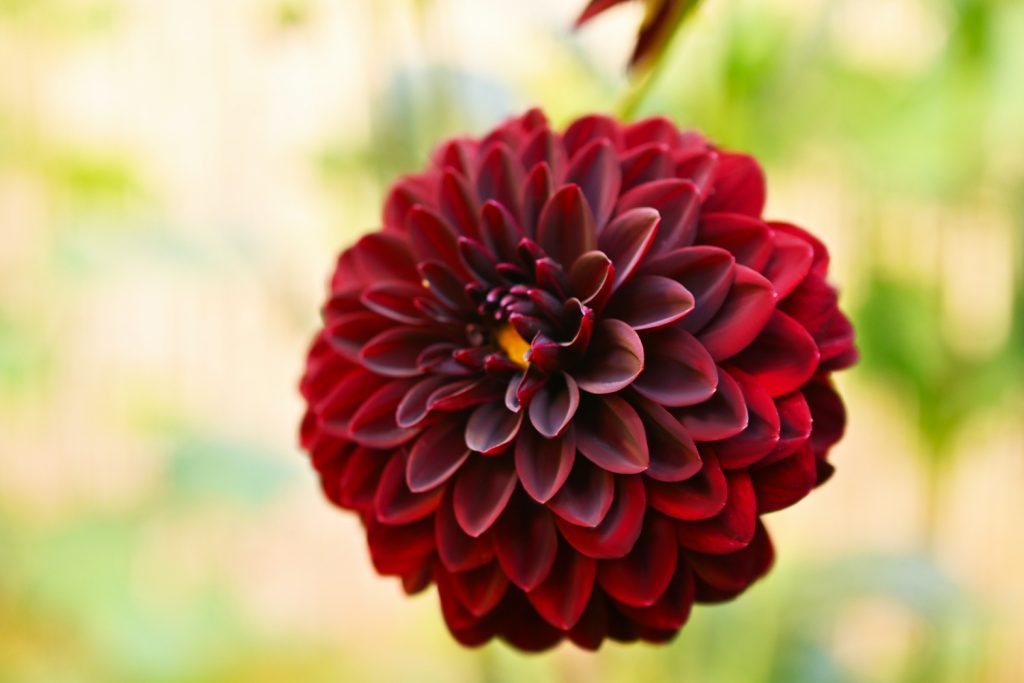
Zinnias work best in small spaces
If you haven’t got a lot of space to play with, but want to jazz up your yard with some fast color, zinnias are the best choice for you. Zinnias bloom around 60 days after the seeds germinate, so you don’t have to wait several years for plants to get established, as you would with peonies. They’re also perfect for dressing up decorative planters and window boxes.
Dahlias are easier to grow as perennials
Even though both of these plants can be grown as perennials, zinnias are harder to keep alive during the winter months, even in warmer climates. Dahlias may not be able to survive the harsh cold, either. However, when planted in zones 8 through 11, and when protected by a thick layer of wood chip mulch, dahlia bulbs are more likely to survive than zinnias in the same circumstances.
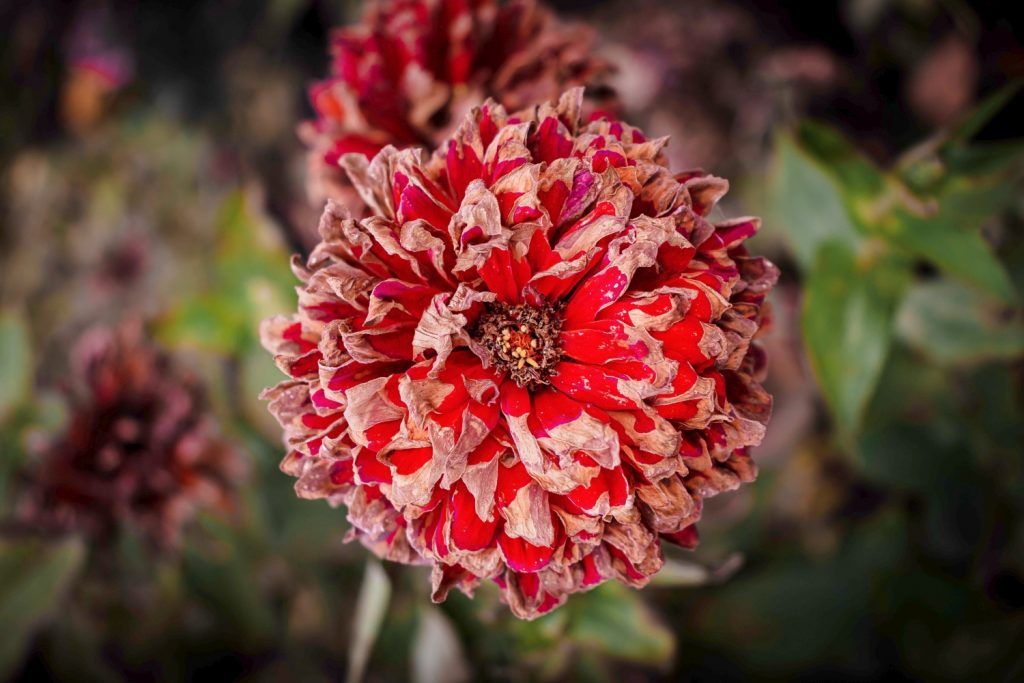
Zinnias improve the health of surrounding plants
While dahlias are more than capable of attracting pollinators, zinnias have a natural affinity for supporting the health of surrounding plants. And not just because they catch the attention of local bees, butterflies, and hummingbirds, but also because they can be used to repel damaging insects.
Like marigolds, zinnias can be planted near many of the fruits, vegetables, and herbs in your garden to keep pesky bugs at bay. In some cases, as with kale, zinnias can even be planted as a trap crop. By sacrificing a few zinnia plants to garden pests, you can help keep your crops safe until the end of the growing season.
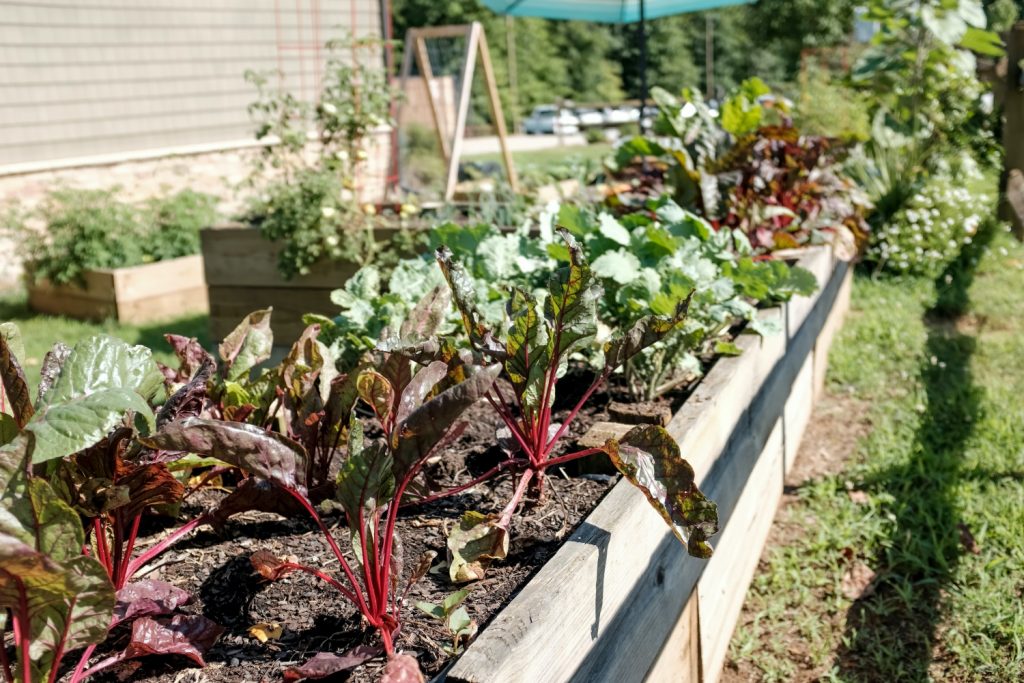
Dahlias are popular with birds
Because they’re much taller than zinnias, and because their bright colors make them difficult to miss, dahlias are very popular with wild birds. While your neighborhood flock may or may not be interested in nibbling on your dahlia’s flower buds, they’ll almost certainly enjoy foraging for the flower’s seeds, even in the dark of night.
Birds spend a good portion of their day scrounging around for food to eat. In the spring and summer months, birds are keen to feed on fresh fruit. But, as fall approaches, most birds turn their focus to nuts and seeds. Growing dahlias, and allowing the flowers to go to seed, is an easy way to support your local birds and help them prepare for winter.
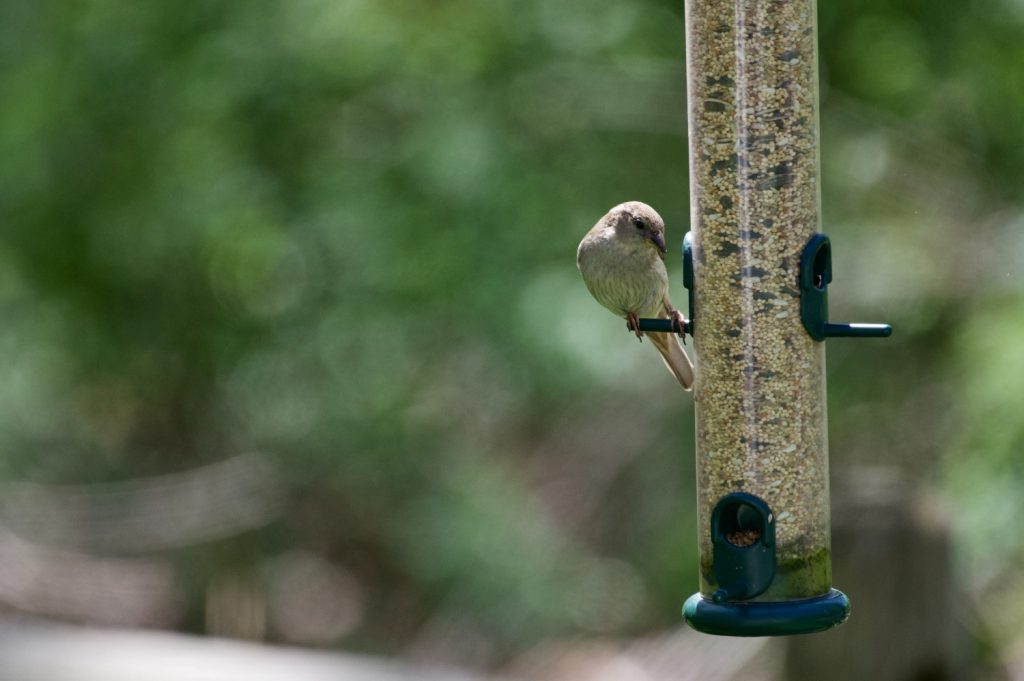
Dahlia vs. Zinnia — Which flower is best?
By now you know that in spite of their many similarities, there are actually some important differences between dahlias and zinnias that influence how they should be planted and cared for.
As for which flower is best, that’s totally up to you to decide! But by considering your garden’s needs, as well as your own desires as a gardener, you’ll be able to choose which one will be the perfect flower for your landscape.
